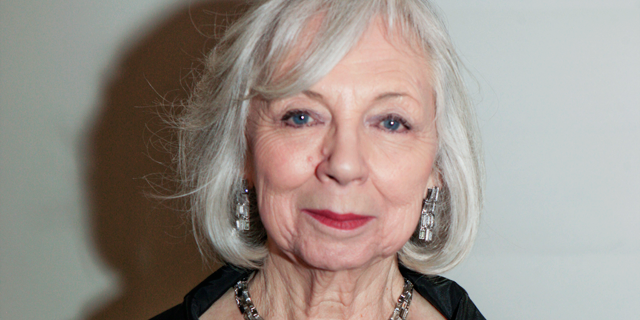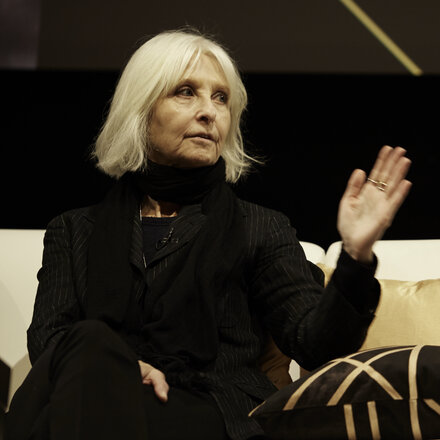
Stephenie McMillan: Interview
BAFTA nominee and Hogwarts alumna Stephenie McMillan gives us the lowdown on decorating the most successful film franchise of all time and how it feels to start a new project after a decade of wizardry.
Published 21 November 2012.
Words by Lucy Denham
Set decorator Stephenie McMillan has worked on a catalogue of modern classics, with film credits including the Harry Potter series, Chocolat, Notting Hill, The Secret Garden, Shadowlands, A Fish Called Wanda and The English Patient, for which she won an Oscar.
It’s an impressive back catalogue, but the success hasn’t gone to her head. McMillan maintains a strong sense of modesty in her approach to her work. “The production designer has the vision,” she says, “and as set decorator you have to bring this vision to life. Set decorating should never steal thunder from actors, nor should it ever be so showy that you’re looking at the furniture rather than the action.”
McMillan wasn’t born into a filmmaking family; she fell into the profession almost by accident. After training as a secretary, she took on a job in a London architect firm where she remembers experiencing a kind of aesthetic awakening. She then worked as a stylist with photographer Michael Boys before getting her first set decorator roles on commercials. Work in short films followed, before the move over to features. “Commercials are very good training,” she explains. “You have to make decisions really quickly and learn about compromise.”
Landing the position of set decorator on the Harry Potter series in 2001, she relished the financial and creative freedom the production offered. “When I think about the last ten years on Harry Potter, I rarely had to compromise. I had enough time and money to get it right.” Working alongside production designer and long-time collaborator Stuart Craig, McMillan was quick to take advantage of the franchise’s resources to bring J.K. Rowling’s world to life.
The Harry Potter prop store at Leavesden was legendary. When the Room of Requirement in Deathly Hallows was transformed by 13 mountains of furniture, much of it came from the department’s own stocks. The sheer scale of some of the sets, meanwhile, required months of military-like preparation. McMillan explains how they created the Great Hall set for the Yule Ball scene: “We covered entirely the stone walls with silver lamé and made 17 sets of matching silver curtains with elaborate swags and tails, huge ice sculptures cast in resin and 250 silver cross-legged stools.” This alone took three months to prepare.
The films’ magical elements gave McMillan and Craig plenty to play with, so newly-sourced or existing items would often need to be adapted to fit their supernatural surroundings. “The house in Grimmauld Place appears magically in the middle of a very tall terrace, so it needed to look squeezed. Stuart designed the rooms with particularly high ceilings so we worked with the construction and prop teams to add extra height to wardrobes, dressers and four-poster beds to continue the illusion.”
"On Harry Potter, working with the very best on every level – nothing was impossible."
For McMillan, one of the most satisfying aspects of the Harry Potter series was collaborating with others who shared her passion for getting things right. “On Harry Potter, working with the very best on every level; graphics, visual effects, prop makers – Pierre Bohanna’s team – nothing was impossible. There is great satisfaction that real teamwork at that level gives you.”
So how can you follow working on the most successful film franchise of all time? McMillan’s approach to new projects has always started with getting a firm grasp of the script. “The script is like a Bible,” she explains. “I work through the script, making lists of any special props that are referred to. Then we just start finding them. At the beginning of a film it is quite exciting – you have a list of all the sets you’ve got to do and an approximate price against them and then it’s like a jigsaw puzzle, really. Gradually, you fill everything in.”
Last year saw McMillan take on-set decoration responsibilities for the remake of the 1966 Michael Caine comedy Gambit. The film, scripted by the Coen brothers, follows the attempts of a British art curator (Colin Firth) to get his own back on millionaire Lord Shabandar (Alan Rickman) by conning him into buying a fake Monet.
Working on Gambit was a different world from the extravagance of the Potter franchise, and McMillan had to re-learn how to work to a tight budget. “For one scene alone we needed 50 framed oil paintings. It was a big challenge on a small budget. It was exciting, if scary, with so little money.”
Gambit took her back to the hire houses she’d used in the past, where she was happy to spot a few familiar go-to items. “We hardly used the hire companies on Harry Potter so I was really curious to see how the stock had changed. On Notting Hill, I used a beaten-up leather Chesterfield in Hugh Grant's scruffy house. It was still available at Farley Hire and seemed like the perfect sofa for Colin Firth's apartment in Gambit.”
This key to set decoration, she explains, is noticing the little things. “You learn through observation. Look around and see what’s in a person’s room. I always look to see what books people have sitting behind them in interviews.” Whether it’s spotting an old art deco bath in a Tunisian market or a kidney-shaped dressing table sitting in a rubbish tip, McMillan has a knack for finding the perfect prop in the most unlikely of places.
Her dedication to the craft has not gone unnoticed. McMillan has been nominated for three BAFTAs and won an Oscar in 1996 for Best Art Direction-Set Decoration on The English Patient. The award, presented by Sandra Bullock, was shared between McMillan and Stuart Craig. They had just been working on a film with Bullock and as a wry smile crept across her face before she announced the winner’s name, McMillan remembers how her heart skipped a beat. “’Oh God, it’s going to be us,’ I thought.”
Asked about advice for new blood wanting to join the set decorating ranks, McMillan recognises there are difficulties getting there. Her answer is simple: persistence. “You have to be prepared to go for jobs that are low paid. Make yourself indispensable, try to be a useful cog in the wheel... and make really good cups of tea!”
Finally, what does she think got her where she is today? “It’s a culmination of experience, being observant and being interested in people and their environments. But there's something else: an instinct and a certain sensitivity. I'm not sure you can learn that.”





